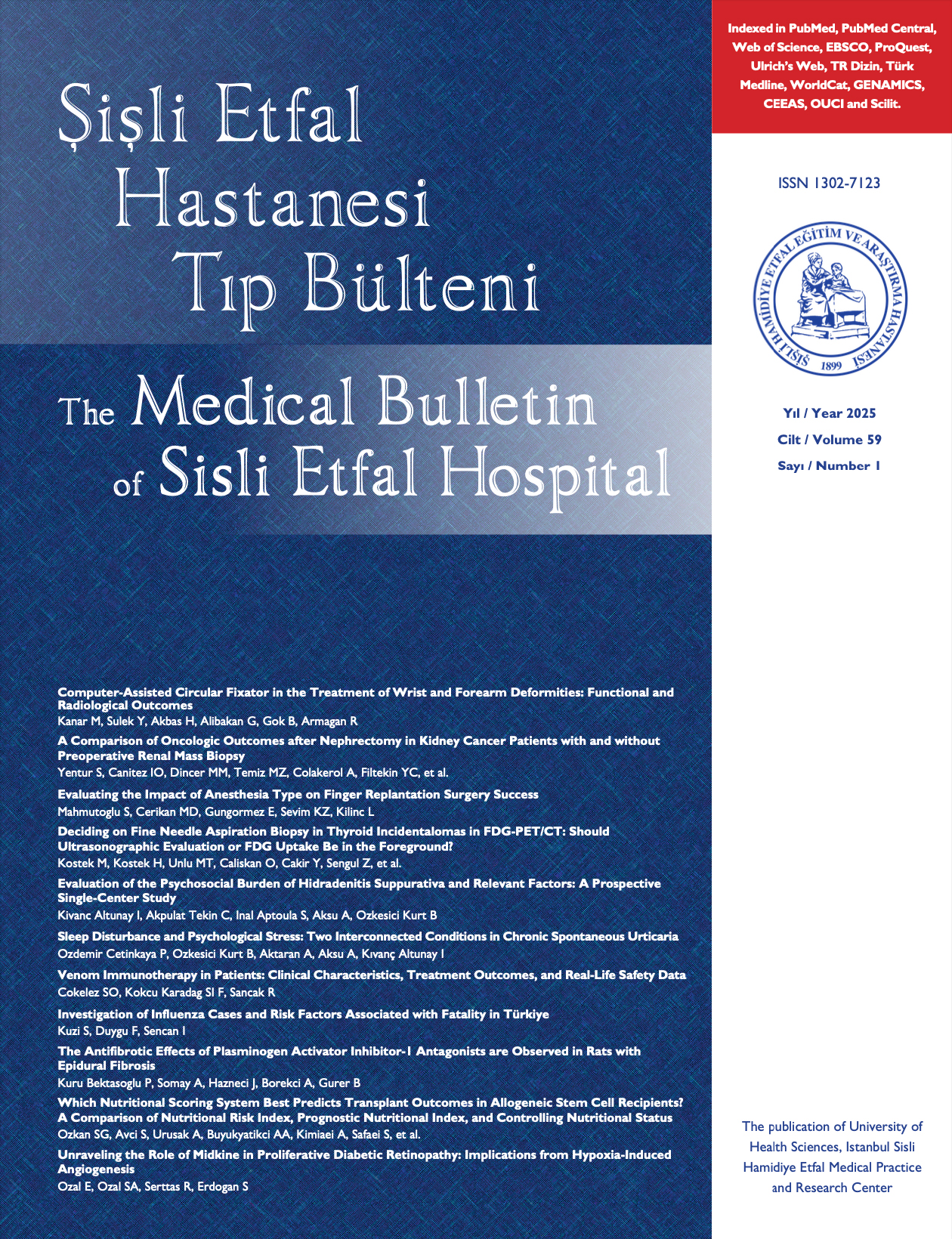
Prurigo Nodulariste Atopik Deri Yapısının Rolü
Yasemin Erdem, Ozgke Impram Ntousounous, Esen Ozkayaİstanbul Üniversitesi İstanbul Tıp Fakültesi, Dermatoloji ve Venereoloji Anabilim Dalı, İstanbulAmaç: Atopik deri prurigo nodülaris (PN) etiyolojisinde önemli bir rol oynamaktadır. Atopik dermatit (AD) tanısı alan hastaların yanı sıra, atopik deri yapısı da kaşıntı ile ilişkili olarak PN etiyolojisinde rol alabilir. Bu çalışmada amacımız PN tanılı hastaları, AD/atopik deri yapısı, eşlik eden hastalıklar ve klinik özellikler açısından değerlendirmektir.
Gereç ve Yöntem: Çalışmaya 2014-2024 yılları arasında klinik ve histopatolojik bulgular ile PN tanısı konulan hastalar dahil edildi. Pruritus etiyolojisinde yer alabilecek hastalıklar komorbidite olarak kayıt edildi. Atopik dermatit tanısı Hanifin-Rajka tanı kriterleri ile, atopik deri yapısı ise Erlangen atopi skoru ile değerlendirildi. AD ve/veya atopik deri yapısına sahip olanlar atopik, bunların dışındakiler non-atopik olmak üzere hastalar iki gruba ayrıldı. Bu gruplar demografik ve klinik bulgular açısından karşılaştırıldı.
Bulgular: Çalışmaya 15 (%31.9)i erkek, 32 (%68.1)si kadın toplam 47 hasta dahil edildi. Hastaların %89,4 (n=42)ünde en az bir, %34 (n=16)ünde birden fazla komorbidite tespit edildi. Hastaların %55,3 (n=26)ünde AD (n=14) ve/veya atopik deri yapısı (n=12) mevcuttu. Atopik grubun yaş ortalaması düşük (p=0,001), serum total IgE düzeyi yüksek (p=0,031) bulundu.
Sonuç: ADnin yanı sıra izole atopik deri yapısının da PN etiyolojisinde önemli bir faktör olduğu görülmüştür. Düşük yaş ortalaması ve yüksek IgE düzeyi atopik yatkınlık ile ilişkili bulunmuştur. (SETB-2024-08-132)
The Significant Role of Atopic Skin Diathesis in Prurigo Nodularis
Yasemin Erdem, Ozgke Impram Ntousounous, Esen OzkayaDepartment of Dermatology and Venereology, Istanbul University Istanbul Faculty of Medicine, Istanbul, TürkiyeObjectives: Atopic skin plays a significant etiological role in the development of prurigo nodularis (PN). In addition to atopic dermatitis (AD), atopic skin diathesis without eczema can also contribute to the development of PN due to its association with itching. This study aims to evaluate PN in terms of AD/atopic skin diathesis, associated comorbidities, and clinical findings.
Methods: Patients diagnosed with PN based on clinical and histopathological findings between 2014 and 2024 were included in the study. Associated diseases that could contribute to the etiology of pruritus were recorded as comorbidities. The diagnosis of AD was evaluated using the Hanifin-Rajkas diagnostic criteria and atopic skin diathesis using the Erlangen Atopy Score. Patients were classified as atopic and non-atopic groups, and these groups were compared in terms of demographic and clinical findings.
Results: The study included a total of 47 patients, of whom 15 (31.9%) were male and 32 (68.1%) were female. At least one comorbidity was identified in 89.4% (n=42) of the patients, and multiple comorbidities were found in 34% (n=16). Atopic dermatitis and/or atopic skin diathesis were present in 55.3% (n=26) of the patients. Among these, 53.8% (n=14) were diagnosed with AD, while 46.2% (n=12) had only an atopic skin diathesis. Compared to the non-atopic group, the atopic group had a lower median age (p=0.001) and higher serum total IgE levels (p=0.031).
Conclusion: In addition to AD, atopic skin diathesis without eczema also appears to play an important role in the etiology of PN. The lower age and higher IgE levels in patients are factors associated with atopic predisposition.
Makale Dili: İngilizce



















